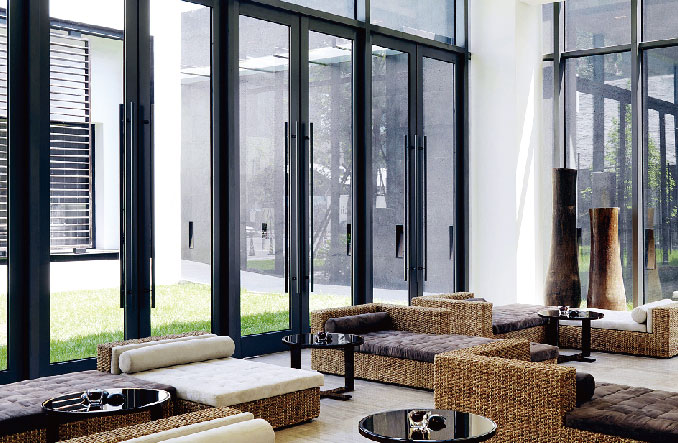Home > Product > Low-E insulating glass series Low-E insulating glass series
LOW-E glass (low radiation glass) is coated with multi-layer metal or other compound film products on the surface of glass.
LOW-E glass is based on glass aesthetics and appearance characteristics. It pays more attention to its heat control, refrigeration cost and comfortable balance of internal sunshine projection. Its coating has the characteristics of high visible light transmission and mid-far infrared reflection plating. Compared with ordinary glass and traditional building coated glass, LOW-E glass has remarkable thermal insulation effect and good transmittance.

Product characteristics
Good visible light transmittance, high visible band retention, strong natural light transmittance.
Low solar transmittance effectively limits the transmission of solar thermal radiation, especially near infrared radiation.
Following the current building energy saving design criteria and evaluation system, the total solar transmittance g (shading coefficient SC) and heat transfer coefficient K parameters of transparent envelope doors, windows and curtain walls are defined in detail according to different regions and building types. Among them, g value is used to evaluate solar radiation heat transfer and K value is used to evaluate temperature difference heat transfer.
Product advantage
Higher visible light transmittance, natural lighting comfort is high. Lower shading coefficient SC effectively limits the penetration of solar radiation.
Lower U value effectively limits the outdoor background heat radiation conduction in summer and better winter insulation performance.
The heat transfer rate of glass is higher in winter and summer. No matter in any region or season, the lower the heat transfer coefficient K, the better. High-performance energy-saving glasses, such as three glasses and two cavities hollow and vacuum glasses, whose K value is below 0.58W/m 2.K, can effectively limit the heat transfer of solar radiation and heat loss in winter indoors.
Product
- Low-E insulating glass series
- Low-iron glass
- Tempered glass series
- Insulating glass
- Vacuum glass
- Fire proof glass series
- Laminated glass
- Ceramic silk screen glass
- Bulletproof/explosion-proof gl
- The dimming glass
- Built-in scenic glass
- Silk glass
- Shutter Insulating glass
- Spied glass
- Patterned glass
- Shape glass

